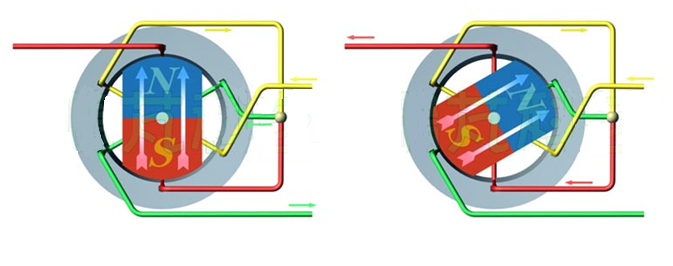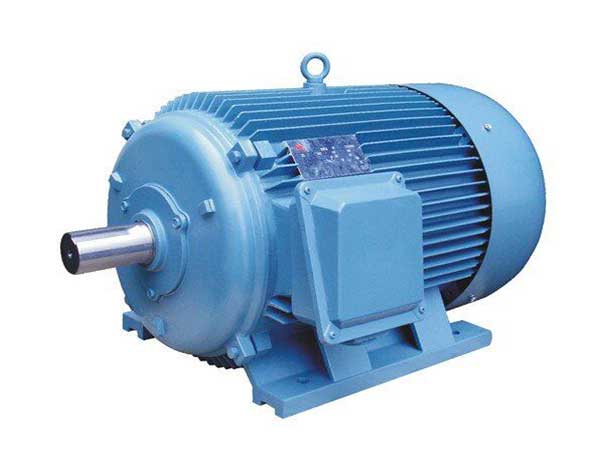
Active Member
|
[China]

Address: No. 18, Xinye Road, High-Tech Zone, Qingdao,Shandong, China
Contact name:Cindy

QINGDAO ENNENG MOTOR CO.,LTD. |
|
Low Maintenance Variable Speed Permanent Magnet Motor For Cooling Tower
| Energy efficiency standards | comply with GB30253-1 grade | Work mode | S1 |
| Installation dimensions | comply with IEC standard | Control mode | variable frequency vector control |
| Power range | 7.5 〜160kW | Governing range | constant torque: 0〜3000r/min weak field: 3000 〜3600r/min |
| Cooling way | IC411 (fan cooling) | Governing range | constant torque: 0〜1500r/min weak field: 1500 〜1800r/min |
| Power range | 7.5 〜250kW | Optional parts | Encoder, spiral transformer, PTC, PT100 |
| Cooling way | IC416 (independent axial flow fan) | Wiring type | junction box (aviation plug can be customized as per requirement) |
| Insulation class | F | Service factor | Standard 1, 2 (customized as per requirement) |
| Protection grade | IP54 (IP23 customizable) | installation | IMB3 IMB5 IMB35 |
What Is The Permanent Magnet Synchronous Motor?
The PERMANENT MAGNET SYNCHRONOUS MOTOR is mainly composed of the stator, rotor, chassis, front-rear cover, bearings, etc. The structure of the stator is the same as that of ordinary asynchronous motors, and the main difference between the permanent magnet synchronous motor and other kinds of motors is its rotor.
The permanent magnet material with pre-magnetized (magnetic charged) magnetic on the surface or inside the permanent magnet of the motor, provides the necessary air gap magnetic field for the motor. This rotor structure can effectively reduce the motor volume, reduce loss, and improve efficiency.
Analysis of the principle of the technical advantages of permanent magnet motor
The principle of a permanent magnet synchronous motor is as follows: In the motor's stator winding into the three-phase current, after the pass-in current, it will form a rotating magnetic field for the motor's stator winding. Because the rotor is installed with the permanent magnet, the permanent magnet's magnetic pole is fixed, according to the principle of magnetic poles of the same phase attracting different repulsion, the rotating magnetic field generated in the stator will drive the rotor to rotate, The rotation speed of the rotor is equal to the speed of the rotating pole produced in the stator.

Due to the use of permanent magnets to provide magnetic fields, the rotor process is mature, reliable, and flexible in size, and the design capacity can be as small as tens of watts, up to megawatts. At the same time, by increasing or decreasing the number of pairs of rotor permanent magnets, it is easier to change the number of poles of the motor, which makes the speed range of permanent magnet synchronous motors wider. With multi-pole permanent magnet rotors, the rated speed can be as low as a single digit, which is difficult to achieve by ordinary asynchronous motors.
Especially in the low-speed high-power application environment, the permanent magnet synchronous motor can be directly driven by a multi-pole design at low speed, compared with an ordinary motor plus reducer, the advantages of a permanent magnet synchronous motor can be highlighted.


There are many types of permanent magnet synchronous motors, which can be divided into sine wave permanent magnet synchronous motors and trapezoidal wave permanent magnet synchronous motors according to the waveform of the stator winding induced electromotive force. In the structure of touch screen maintenance in the composition of machine tool equipment, the stator of the sine wave permanent magnet synchronous motor used is composed of three-phase windings and iron cores. The armature windings are often connected in a Y-shape and short-distance distributed windings are used: the air gap field is designed as a sine wave, to generate a sine wave counter electromotive force; the rotor uses permanent magnets instead of electric excitation.
1. Motor control method
At present, there are mainly two control methods for three-phase synchronous motors, one is another control type (also known as frequency open-loop control); the other is a self-control type (also known as frequency closed-loop control). The other control method mainly adjusts the speed of the rotor by independently controlling the frequency of the N#I-part power supply. It does not need to know the position information of the rotor, and an open-loop control scheme with a constant voltage-frequency ratio is often used. The self-controlled permanent magnet synchronous motor also adjusts the rotor speed by changing the frequency of the external power supply. Unlike the other control type, the change in the frequency of the external power supply is related to the position information of the rotor. The higher the rotor speed, the higher the stator energization frequency. The rotor speed is adjusted by changing the frequency of the applied voltage (or current) to the stator winding.
Because the self-controlled synchronous motor does not have the out-of-step and oscillation problems of the other-controlled synchronous motor, and the permanent magnet of the permanent magnet synchronous motor does not have brushes and commutators, which reduces the volume and quality of the rotor and improves the Response speed and speed range of the system, so we use a self-controlled AC permanent magnet synchronous motor. When the three-phase symmetrical power supply is added to the three-phase symmetrical winding, a synchronous rotating stator magnetic field will naturally be generated. The rotational speed of the synchronous motor rotor is strictly synchronized with the frequency of the external power supply and has nothing to do with the size of the load.
2. The principle of PMSM motor
PMSM stands for Permanent Magnet Synchronous Motor. The principle of operation of a PMSM motor is based on the interaction between the magnetic fields of a permanent magnet rotor and the stator winding currents.
The stator of the PMSM motor has multiple windings that are energized by a three-phase AC power source. The energized windings produce a rotating magnetic field that interacts with the permanent magnets on the rotor, causing it to rotate. The stator winding currents must be synchronized with the rotor position to maintain torque production.
The PMSM motor is a synchronous motor, which means that the rotor rotates at the same frequency as the stator field. The speed of the motor is directly proportional to the frequency of the AC power source and the number of poles in the stator.
The PMSM motor is a highly efficient and precise motor that is widely used in various applications, such as electric vehicles, robotics, and industrial automation.
The working process of PM Motor is as follows:
① Establishment of the main magnetic field of the pm motors: The excitation winding is supplied with a DC excitation current to establish an excitation magnetic field between polarities, that is, the main magnetic field is established.
② Current-carrying conductor of pm motors: The three-phase symmetrical armature winding acts as a power winding and becomes the carrier of induced potential or induced current.
③ Cutting motion of pm motors: the prime mover drags the rotor to rotate (input mechanical energy to the motor), and the excitation magnetic field between polarities rotates with the shaft and cuts the stator winter phase winding in sequence (equivalent to the conductor of the winding reverse cutting the excitation field )
④ Generation of alternating potential of pm motors: Due to the relative cutting motion between the armature winding and the main magnetic field, a three-phase symmetrical alternating potential with periodic changes in size and direction will be induced in the armature winding. AC power can be provided through the lead wire.
⑤ Alternation and symmetry of pm motors: Due to the alternating polarity of the rotating magnetic field, the polarity of the induced potential is alternated, and the three-phase symmetry of the induced potential is guaranteed due to the symmetry of the armature winding.
Permanent magnet direct drive structure and advantages:
The permanent magnet direct drive motor adopts variable frequency vector control technology, low speed and high torque direct drive technology, and intelligent control technology. It has a simplified structure and has the characteristics of high efficiency and low consumption, low speed and high torque, high reliability and maintenance-free, high stiffness and fast response, and no need for lubrication. The low speed, smooth operation, and small vibration greatly reduce the workload of daily maintenance and repair, saving manpower and material costs. Suitable for use in cooling fan scenarios.
Main advantages:
(1) The permanent magnet direct drive motor directly drives the load, eliminating the need for a reducer. It has a simple and reliable structure and is basically maintenance-free.
(2) The reducer and transmission shaft are removed, and the system transmission efficiency is 0.93. When operating below the rated frequency, it has constant torque characteristics, which meet the heavy-load startup requirements of the equipment and make the equipment operation more energy-saving.
(3) The equipment occupies a small space and does not consume lubricating oil and reducer spare parts.
(4) Frequency converter control can achieve soft start, reducing the impact on load equipment and extending its service life.
(5) Under low load conditions, the operating frequency can be appropriately reduced to achieve better energy-saving effects.